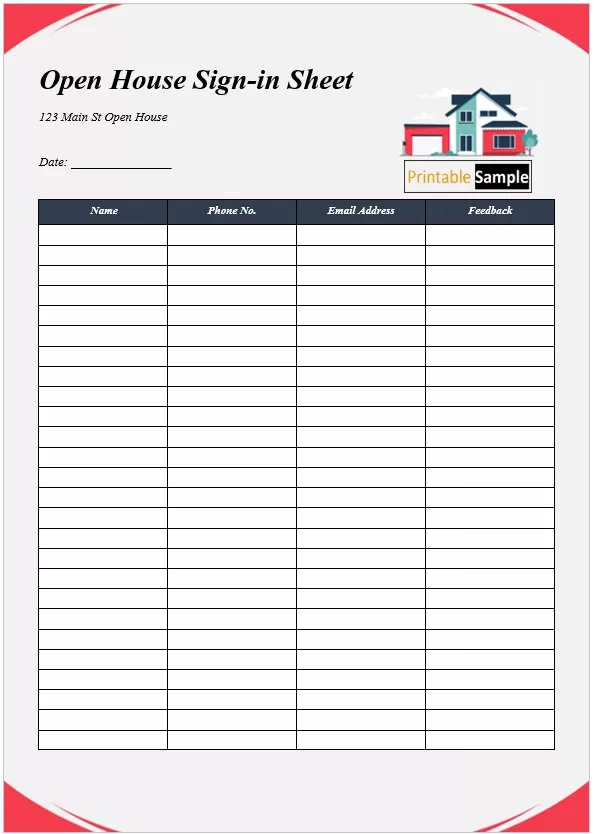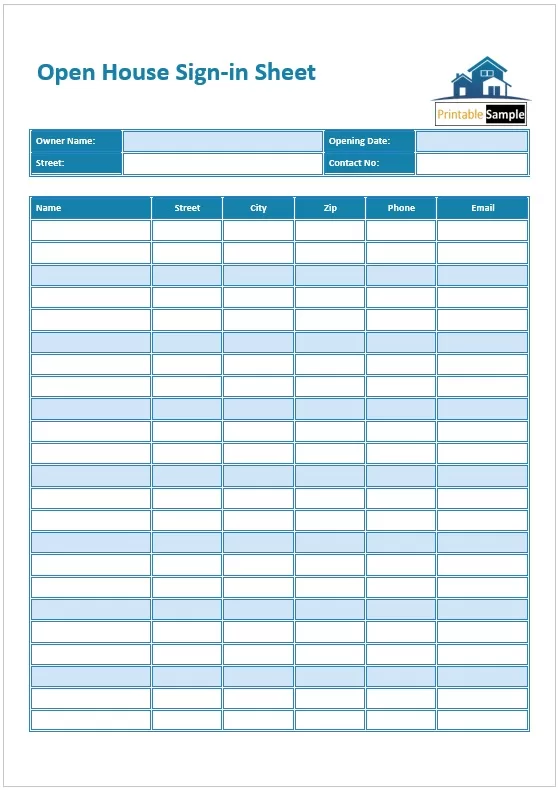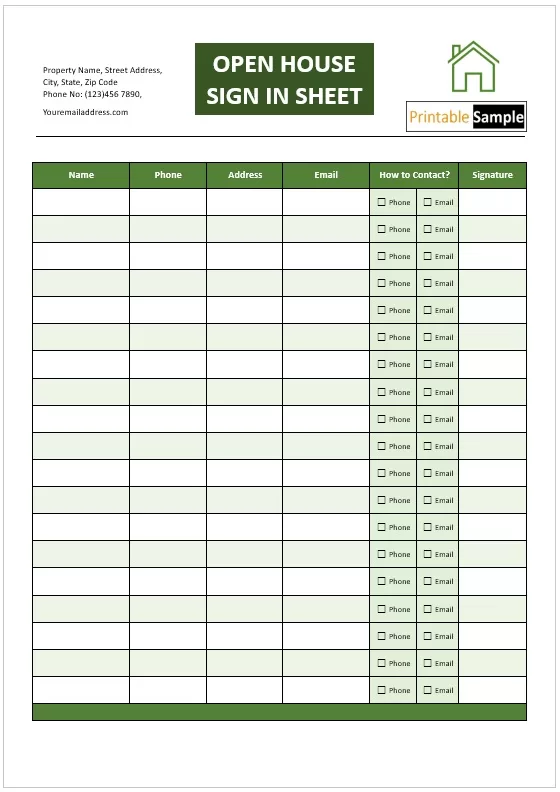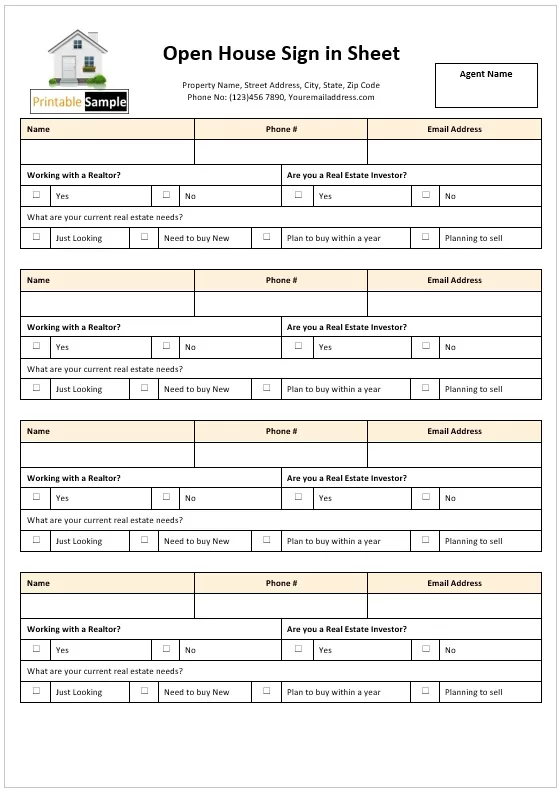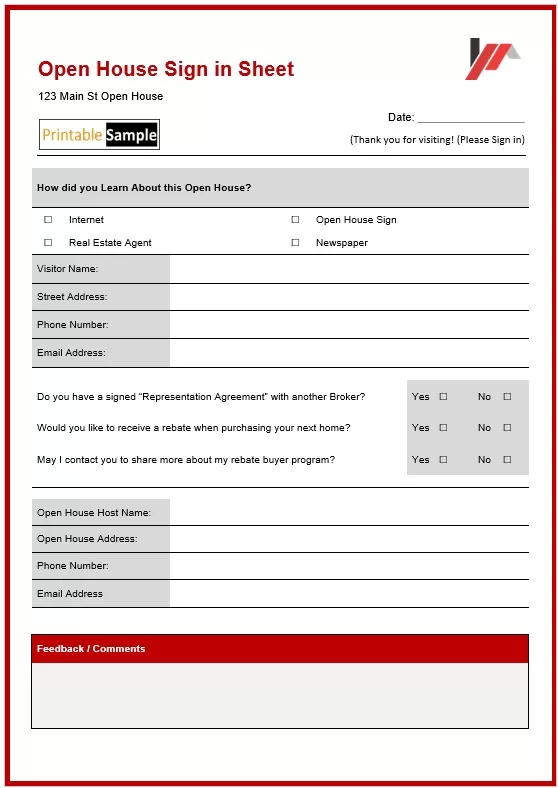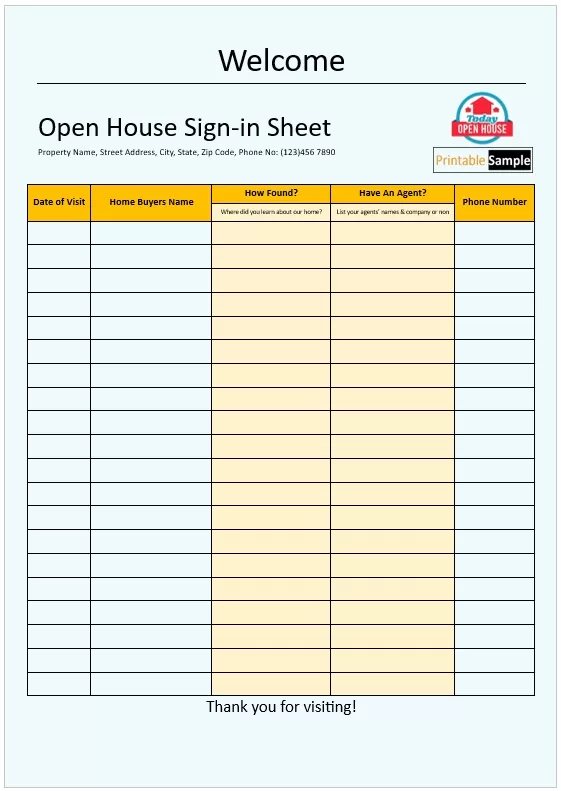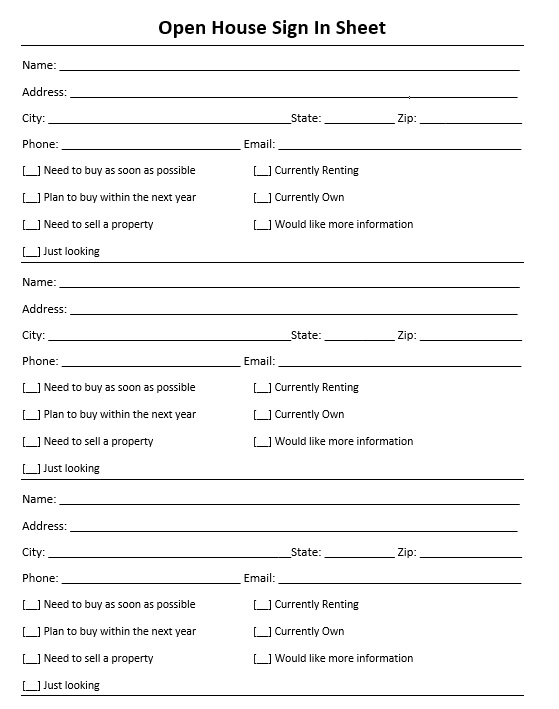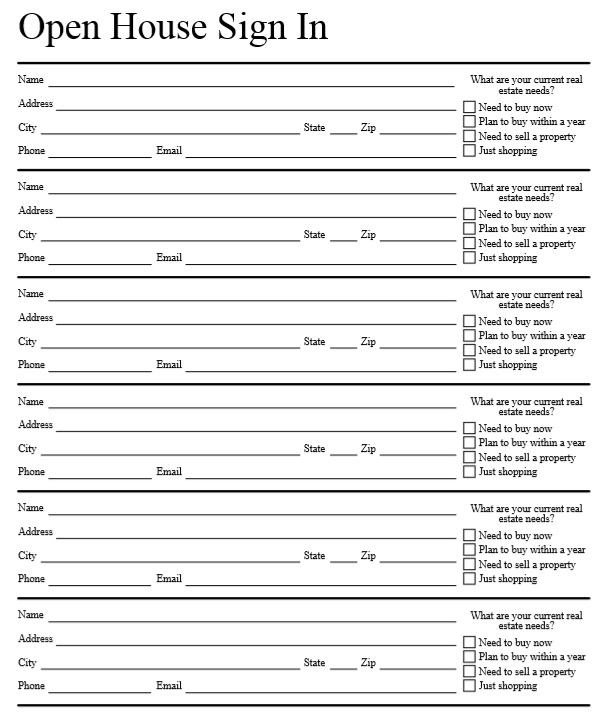Whenever a person is planning on selling his or her house, or property a real estate agent is referred to. Obviously a real estate to sell a property will seek some marketing tactics of an open house. This open house invites prospective buyers and interested parties to come in and view the property with their own eyes. It is an invitation to view each and everything mentioned in ads and flyers with their own eyes. Since so many people will be visiting the property, it is best that there be some kind of security measure that allows the real estate agent and the owner to know who exactly came in and at what time.
Security cameras are also an option but they don’t exactly mention the names and identities of the individuals that will be entering the property. To battle these security issues, a simple yet effective solution in the form of a sign-in sheet has been used. A sign-in sheet is a sheet where people sign in to record their presence and to let the organizers know that they are so and so and they have just entered the premises for the open house or for any other event.
Contents
Open House Sign-In Sheet Format Guidelines:
A sign-in sheet is simple and there is usually nothing much to do about it. People who draft up a sign-in sheet just take a plain paper and keep it out in the front with just a header mentioning that it is a sign-in sheet for this particular event. When organizing, it is advised that when they are drafting a sign-in sheet, some detail should be mentioned on top or attached to it. The reason behind this is that individuals who will be signing in and showing their presence will be giving their signatures or writing their names and authorizing themselves to enter.
They should know exactly what they’ll be looking at and what kind of premises they are entering. If there is no such mention of detail, the guests will just be confused and in the end, may feel like they have wasted their time and it is not the kind of thing that they wanted. It is vital for the organizers to mention details since it will create a lasting impression on the visitors. A sign-in sheet should be very organized. The header should be in bold, such that it can be seen clearly by all.
The details regarding the place or anything can either be mentioned in a few sentences just below the header or can be attached or mentioned at the back. It is better to consider the first option. Make sure that the font that you use is readable and gives a good impression. Then columns should be made that mention the name of the visitor, the time in and time out, and some kind of identification number. In the end, a signature column should also be mentioned. The size of the sign-in sheet depends upon the number of people that are being expected.
Free Open House Sign-In Sheet Templates {Exclusive}
Here are previews and download links for these free Open House Sign-In Sheet Templates prepared exclusively for our website visitors.
Best Practices of Open House Sign-In Sheets
Open house sign-in sheets provide an efficient way for realtors and homeowners to gather information on potential buyers and engage with them over the long run. If thoughtfully created and implemented, such sheets have the most primary use of listing names only, but also engage clients as the first step, help to promote the business or engage them later. In order to do this, a number of best practices need to be adhered to so that these tools become not only effective but also beneficial and purposeful.
Designing for Ease and Clarity
When providing an efficient open house sign-in sheet, the form has to be user friendly, basic, and well-arranged. The guests should be able to see every single thing they need to do without any stress or panic. The format should also include distinct sections for name, phone, email, and if the guest is collaborating with a realtor or not. Visitor’s attention is focused and thus ensures almost error free filling enhanced by organized clear contents and order of structure. However, if the sheet is busy or badly designed, these factors restrict the users which explains why engagement is minimal.
Encouraging Voluntary Participation
Creating a warm and inviting environment where people would not mind providing their details is very important. Instead of pushing every visitor arriving at the front desk to and force them to sign in, the agents can try to sensibly elicit the advantages of carrying out this action. Link it with the advantages for visitors, like a possibility of receiving information, introductory prices, or new property offers. When the tone is professional and regarded in such a positive way, it makes sense to seek cooperation since it is clear how other people’s details should and should not be used. Available signage near the sheet is a good way to solidify the purpose.
Integrating with Digital Follow-Ups
Among the most effective tactics is making sure the data collected is put to use and does not remain dormant. Once the open house is over, the information collected on the sign-in sheet can be used to send emails, text messages or even call the individuals and remind them about the house. This is only possible after the information is stored in a Customer Relationship Management software or in an email system. The leads can be worked upon with messages thanking them for attendance, sending them other relevant houses, or even scheduling an appointment to come and see more houses again. Saving that data eliminates most of the manual mistakes associated with data handling, and such information can be seized much quicker and with more precision.
More Free Open House Sign-In Sheets
Here is preview of This First Sample Open House Sign-in Sheet Template created using MS Word,
Common Mistakes in Open House Sign-In Sheets
Open house sign-in sheets are a common practice in real estate but are usually not maximized or used alongside other tactics to enhance their effectiveness. Such documents, with careful construction and implementation especially, are a goldmine for any marketing or sales forces. It is however sad to realize that there are some bad practices by most agents that make it impossible to come up with quality data and even worse dampen the experience of the people who have showed up. Real estate agents can turn their fears on their heads and realize the potential of sign-in sheets as lead generation tools rather than absent causes by avoiding the following fears.
Asking for Too Much or Too Little Information
The most typical issue is the inappropriate structure of the template itself. Open house sign-in sheets would sometimes ask for too many personal details of the attendees such as their complete mailing address, identification card numbers, professions, among others, which usually tend to put people off from participating. There are also the other types of forms which do not ask for too much but important aspects like contact email or agent details which are necessary in the follow-ups. The principle of moderation should apply perfectly here, asking only for such information and filling only such fields which enable and create every possibility to generate more leads followed by the process of nurturing without irritating the visitors with excessive fields.
Ignoring Privacy and Transparency Concerns
It is a common occurrence that agents underestimate the need to specify the uses of the data collected. If they do not explain this or even put a short privacy statement and notify the guests on the handling of their personal information, it becomes quite an issue, worse still, in the current world which is so sensitive about privacy. When people doubt where personal information is headed or if they will be contacted against their wishes, they henceforth fill in wrong information or desist from filling at all. Being clear helps build confidence and credentials of the agent and the brand but on the contrary, lack of disclosure levels the trust down.
Failing to Provide a Comfortable Signing Experience
One more thing that is rather frightful is that the sign-in sheet is not placed or presented very effectively. If you put it somewhere impractical, such as beside an exit or in an overcrowded hall, visitors are likely to walk past it or skip it. In the same manner, if you provide only a paper form with a single ball-point pen, then there is a possibility of multiple visitors getting irritated because of the delay. Given the absence of a proper welcoming and functional sign-in area, the numbers of attendees reduce, and the agent loses contact with many people. Each additional design feature, regardless of whether it is digital or actual — benefits in attracting and converting as many quality leads as possible to a company or losing all such leads.
Not Using the Data After the Event
A common misstep is gathering sign-in information and then doing nothing with it. To wit. the contact never takes on a life of its own without any personal or timely engagement, and such a contact goes uninterested. Such evidently brazen collection of information, and failure to incorporate it within a CRM, leaves one to wonder why you yourself would ever need a sign in sheet. Efficient outreach following the event(s) helps translate the interest into actions, and nurture Client Relationship Management over time.
